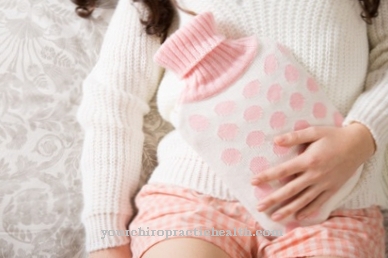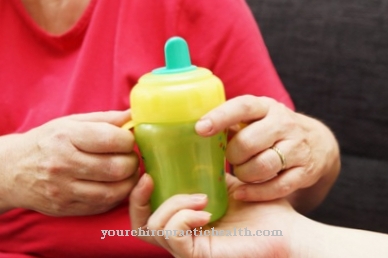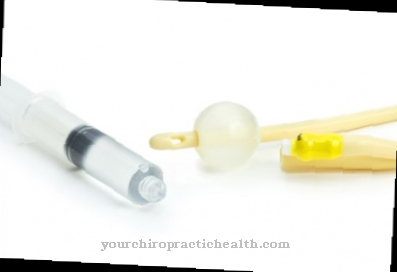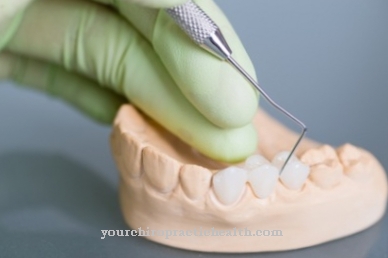Breastfeeding products can provide support when breastfeeding is not possible naturally. Breastfeeding products include breast pumps, nipple shields, nursing pads and breast milk containers.
What are breastfeeding products?

Breastfeeding is a very intimate and natural experience for both mother and child. Breast milk also offers the baby many health benefits. According to the recommendation of the WHO, babies should be fed exclusively with breast milk for the first six months after birth.
But breastfeeding does not always go smoothly. Sometimes mothers need support. Breastfeeding products such as breast pumps, breast milk bottles or breast compresses help mothers to provide their baby with the most natural possible nutrition.
Shapes, types & types
If mothers produce too little or too much milk, breast pumps can be used. The use of a breast pump can also provide valuable support for sore nipples or if the baby has to remain in the hospital. Hand breast pumps are sufficient for occasional expressing. Expressing with electric breast pumps is more convenient and efficient. These can usually be operated via a mains plug or battery. Breast pumps are available for one or both breasts. They are often offered in a set with a bag or a backpack and thus offer active or working mothers the possibility of expressing on the go.
The milk can be pumped directly into breast milk bottles with the breast pumps. These bottles are break-proof and are suitable for collecting, storing and freezing breast milk. Babies can also be fed directly with a teat that matches the bottles. Instead of milk bottles, milk bags can also be used for expressing. The bags are usually pre-sterilized and leak-proof.
A steam sterilizer is recommended for disinfecting breast milk bottles or breast pump accessories. The cleaning of bottles, breast shields, teats and tubes of breast pumps is also possible in the microwave with special microwave bags. The disinfection is done with steam.
If the mother has sore nipples, nipple shields can provide relief. These are placed on the nipple and the child sucks on the nipple shield instead of directly on the nipple.
Nipple cream for sensitive or dry nipples is also available in stores. Nipple cream usually contains lanolin and nourishing and anti-inflammatory ingredients. Coolable hydrogel pads can also help.
If too much milk is produced, milk collecting trays offer a safe solution. Alternatively, disposable nursing pads can also be used.
Structure & functionality
Manual breast pumps usually consist of a dial and an adjustable funnel with inserts. The suction strength can be individually adjusted on the adjusting wheel. The funnel with the inlays is placed on the nipple. Then the pump lever creates a vacuum that lets the breast milk flow out.
Electric breast pumps work on a similar principle. However, the pumping takes place automatically here and does not have to be carried out manually by hand. Electric breast pumps can also be borrowed from pharmacies, midwives' practices or medical supply stores.
In the case of increased or decreased milk production, antibiotic treatment of the mother, inflammation of the nipples or breasts, premature babies or sick newborns and if the newborn is poorly hydrated, the cost of renting the electric breast pump will be reimbursed by the health insurance company.
Medical & health benefits
Breastfeeding infants has many benefits for both mother and child. This shows, among other things, that mothers who are breastfeeding can regain the weight they had before pregnancy more quickly and easily. In addition, the process of breastfeeding creates a bond between mother and child.
Breast milk is extremely rich in nutrients and also contains all these nutrients in a high quality. The milk is easy to use and optimally composed for the babies. It contains carbohydrates, fats, proteins and vitamins. It also contains minerals. The child also receives enzymes with the breast milk that support the child's digestive system, which is still very immature.
Studies show that breastfed babies have healthier intestinal flora than children who were not fed or not fed exclusively with breast milk. Breastfeeding also has an important impact on the newborn's immune system. Antibodies, especially IgA and IgG, are passed on through breast milk. These protect the child from numerous infections in the first years of life.
Every mother would like to give her child a healthy start in life. However, this is not always possible without any problems. Too much milk, too little milk, milk flow problems, sore nipples or simply the circumstances after the birth can be an obstacle. It is not uncommon for the fresh mothers to feel bad mothers because of the breastfeeding problems. Especially right after the birth, there is still a mess in the hormonal system. Mothers are therefore often not as psychologically stable in the period after the birth as they were before the birth. If there are still problems with breastfeeding, this is perceived as an additional burden.
Breastfeeding products can help. They enable mothers to provide their children with healthy breast milk despite breastfeeding problems. Too much milk can be expressed using the breast pump, so that a milk blockage is prevented. If there is not enough milk, milk production is stimulated by the breast pump. Breastfeeding products to protect the nipples offer the opportunity to continue breastfeeding newborns and infants even with irritated nipples.
Breastfeeding products help mother and child through the often turbulent time after the birth and thus enable a healthy start in life even with breastfeeding problems.




























